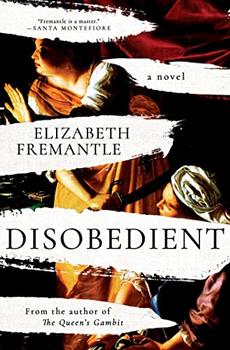Summary | Excerpt | Reviews | Beyond the book | Read-Alikes | Genres & Themes | Author Bio

A Novel
by Elizabeth FremantleA riveting novel based on the life of Artemisia Gentileschi—the greatest female painter of the Renaissance—as she forges her own destiny in a world dominated by the will of men.
This is the ring that you gave me, and these are your promises.
A young woman is put on trial. She has accused her painting teacher of the darkest betrayal - he accuses her of being an immoral liar. What really happened, and why will this trial scandalise seventeenth-century Rome?
Rome 1611. A jewel-bright place of change, with sumptuous new palaces and lavish wealth on constant display. A city where women are seen but not heard.
Artemisia Gentileschi dreams of becoming a great artist. Motherless, she grows up among a family of painters - men and boys. She knows she is more talented than her brothers, but she cannot choose her own future. She belongs to her father and will belong to a husband.
As Artemisia patiently goes from lesson to lesson, perfecting her craft, a mysterious tutor enters her life. Tassi is a dashing figure, handsome and worldly, and for a moment he represents everything that a life of freedom might offer. But then the unthinkable happens. A violent act that threatens Artemisia's honour, and her virtue.
In the eyes of her family, Artemisia should accept her fate. In the eyes of the law, she is the villain.
But Artemisia is a survivor. And this is her story to tell.
The prose pays tribute to the subject's art in its own subtle yet effective way, painting vivid scenes with words much like Gentileschi would with her brush. Despite capturing a sense of time and place so well, and sticking closely to factual accounts of the events, Fremantle keeps her focus firmly on the personal, human aspect of Gentileschi's story, lending it a timeless, universally relatable quality. Consequently, Disobedient is just as likely to stir passionate art historians as it is those who have never heard the name Artemisia Gentileschi before...continued
Full Review
(664 words)
This review is available to non-members for a limited time. For full access,
become a member today.
(Reviewed by Callum McLaughlin).
 Judith Slaying Holofernes — also referred to as Judith Beheading Holofernes — is widely considered the masterpiece of Italian Baroque artist Artemisia Gentileschi (1593-c.1656), the protagonist of Elizabeth Fremantle's novel Disobedient. It depicts the Biblical tale of the widowed Israelite Judith, with the help of her maidservant Abra, killing the Assyrian general to free her people from his siege on the city of Bethulia.
Judith Slaying Holofernes — also referred to as Judith Beheading Holofernes — is widely considered the masterpiece of Italian Baroque artist Artemisia Gentileschi (1593-c.1656), the protagonist of Elizabeth Fremantle's novel Disobedient. It depicts the Biblical tale of the widowed Israelite Judith, with the help of her maidservant Abra, killing the Assyrian general to free her people from his siege on the city of Bethulia.
The tale of Judith was popular among artists at the time, but Gentileschi's depiction is noted for being perhaps the most graphic and realistic ever put to canvas, with a marked emphasis on the physical strength and mental determination of her heroine, as well as the resulting bloodshed.
 There are, in ...
There are, in ...
This "beyond the book" feature is available to non-members for a limited time. Join today for full access.

If you liked Disobedient, try these:

by Xochitl Gonzalez
Published 2025
New York Times bestselling author Xochitl Gonzalez delivers a mesmerizing novel about a first-generation Ivy League student who uncovers the genius work of a female artist decades after her suspicious death

by Emily Howes
Published 2025
A "beautifully written" (Hilary Mantel) story of love, madness, sisterly devotion, and control, about the two beloved daughters of renowned 1700s English painter Thomas Gainsborough, who struggle to live up to the perfect image the world so admired in their portraits.
There is no such thing as a moral or immoral book. Books are either well written or badly written. That is all.
Click Here to find out who said this, as well as discovering other famous literary quotes!